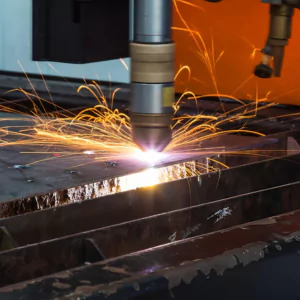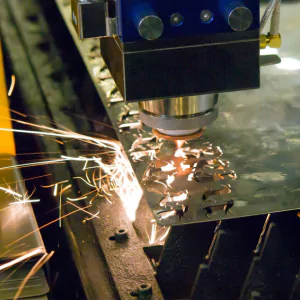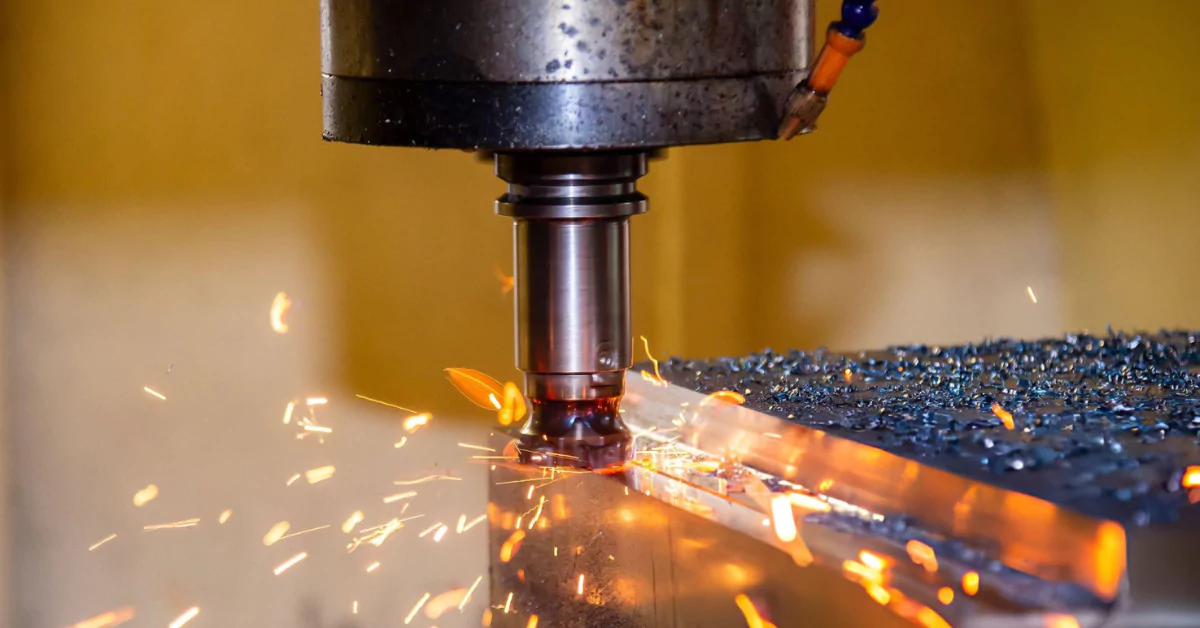Understanding the CNC Milling Process
CNC Milling is a computer-controlled machining process that uses rotating cutting tools to remove material from a workpiece, producing complex parts with high precision. This advanced manufacturing process is widely used in industries such as aerospace, automotive, and electronics due to its accuracy and versatility. With advancements in technology, CNC Milling Machines have evolved to handle intricate designs and complex geometries that are nearly impossible with manual machining.
Understanding the CNC Milling Process
The CNC Milling Process involves using pre-programmed computer software to dictate the movement of cutting tools. This automation allows for the precise shaping of materials like metal, plastic, and wood. The process begins with a digital design, typically a CNC Milling 2D Drawing or a 3D CAD model, which is then translated into machine code using specialized software. This code, often in G-code CNC Milling, instructs the machine on tool movement, speed, and cutting paths.
Types of CNC Milling Machines
- Vertical CNC Milling Machine – Designed with a vertically oriented spindle, ideal for precision tasks.
- Horizontal CNC Milling Machine – Features a horizontal spindle, suitable for heavy-duty milling operations.
- Mini CNC Milling Machine – Compact and affordable for small-scale production and prototyping.
- Desktop CNC Milling Machine – Portable and user-friendly, perfect for educational and hobbyist use.
- Multi-Axis CNC Milling Machine – Offers enhanced flexibility with 4-axis, 5-axis, or even 6-axis CNC Milling Machine capabilities for complex geometries.
 CNC Milling Tools
CNC Milling Tools
CNC Milling Tools play a critical role in shaping materials. Common tools include:
- End Mills – Used for cutting slots, profiles, and complex 3D shapes.
- Face Mills – Designed for high-speed material removal.
- Ball Nose Cutters – Ideal for intricate surface finishing.
- CNC Milling Cutter – Used for various applications depending on the design requirements.
CNC Milling Programming
Programming is essential in CNC Milling operations. The process involves converting designs into machine-readable instructions using:
- G-Code CNC Milling – Controls movement and operations.
- M-Code CNC Milling – Manages machine functions like tool changes and coolant flow.
- CNC Milling Programming Examples with Drawing PDF – Provide guidance for creating efficient programs.
- Fanuc CNC Milling Programming PDF – Offers industry-standard programming methods.
Advanced CNC Milling Software helps in generating optimized tool paths, ensuring minimal waste and maximum efficiency.
IoT Integration in CNC Milling
The integration of IoT in CNC Milling machines has transformed manufacturing processes by enhancing real-time monitoring, predictive maintenance, and automation. IoT-enabled machines offer data-driven insights into machine performance, reducing downtime and improving production efficiency.
Key Components of CNC Milling Machines
Understanding CNC Milling Machine Parts is crucial for optimal operation:
- Spindle – The core component that rotates the cutting tool.
- Tool Holders – Secure various cutting tools.
- Worktable – Supports the workpiece during machining.
- Control Panel – Interfaces for programming and operation.
- Drive Motors – Enable precise movement of machine components.
Advantages of CNC Milling
- High Precision: Ideal for producing intricate designs with tight tolerances.
- Efficiency: Automated systems increase production speed and consistency.
- Flexibility: Suitable for a wide range of materials and complex designs.
- Cost-Effective: Minimizes labor costs and material waste.
 Applications of CNC Milling
Applications of CNC Milling
CNC Milling Services are widely used across various industries:
- Aerospace: Manufacturing lightweight, high-strength components.
- Automotive: Producing engine parts and custom prototypes.
- Medical Devices: Crafting surgical tools and implants.
- Electronics: Creating intricate housing and connectors.
CNC Milling vs. CNC Turning
Difference between CNC Milling and CNC Turning:
- CNC Milling: Uses rotating tools to cut stationary workpieces.
- CNC Turning: Rotates the workpiece while the cutting tool remains stationary.
Maintenance of CNC Milling Machines
Proper maintenance ensures the longevity and performance of CNC Milling Machines:
- Regular Cleaning to prevent debris buildup.
- Lubrication of moving parts to reduce wear.
- Inspection of Tools for wear and replacement.
- Software Updates for improved performance and security.
CNC Milling revolutionizes manufacturing with its precision, efficiency, and versatility. From small custom parts to large industrial components, it remains a cornerstone in modern production. Embrace the future of manufacturing with E S HAJI & CO. and experience unmatched quality and service.

